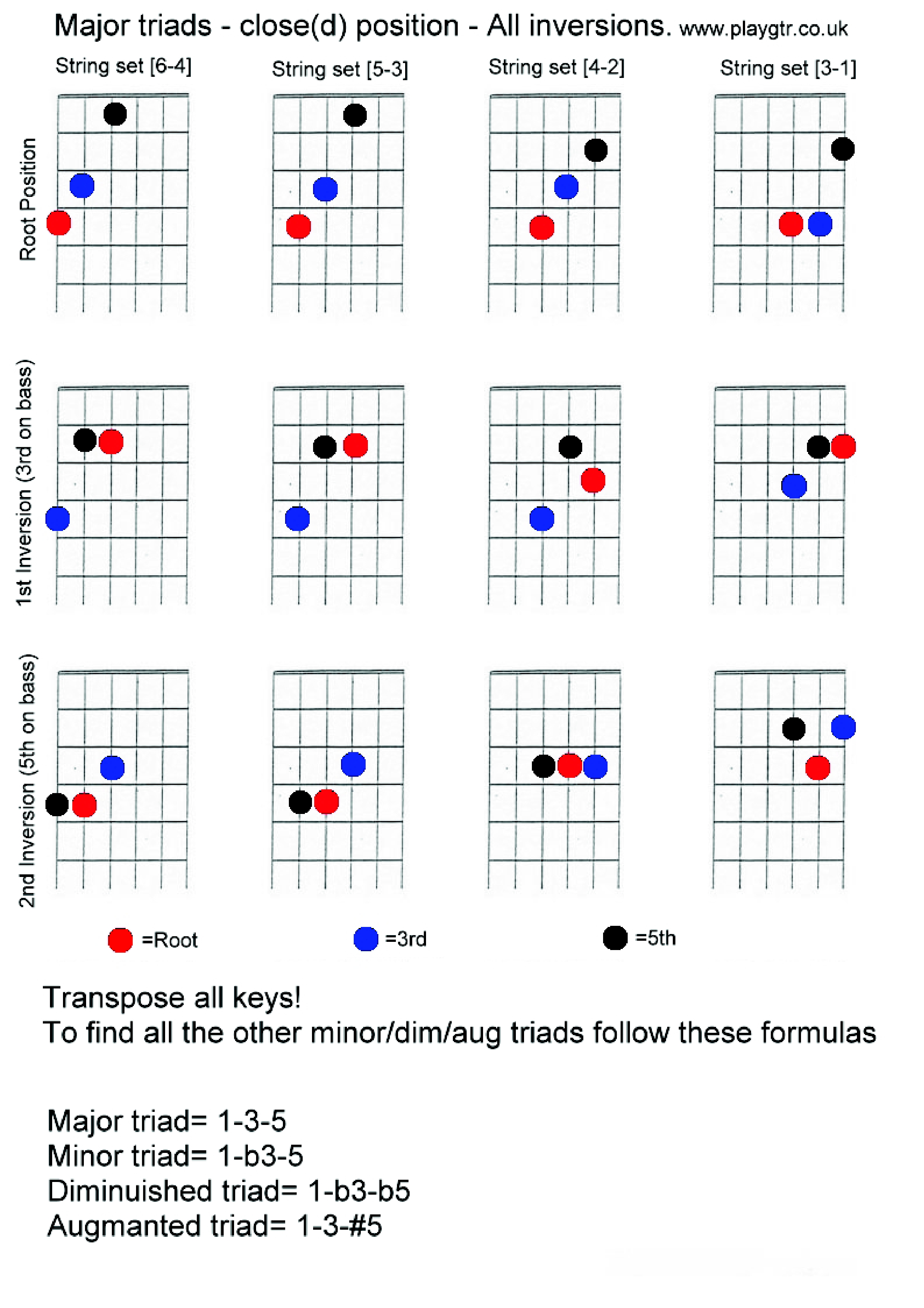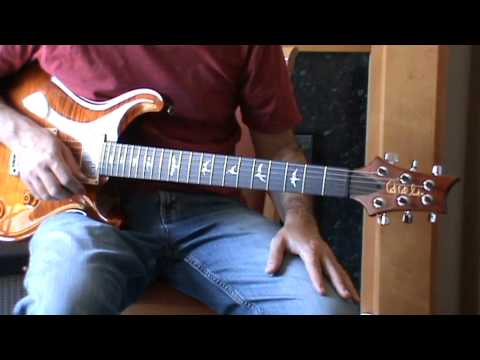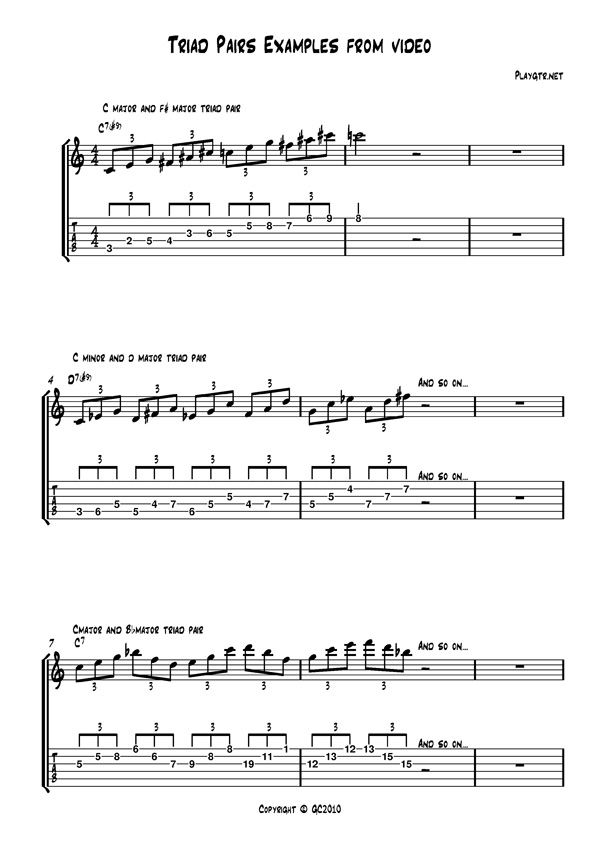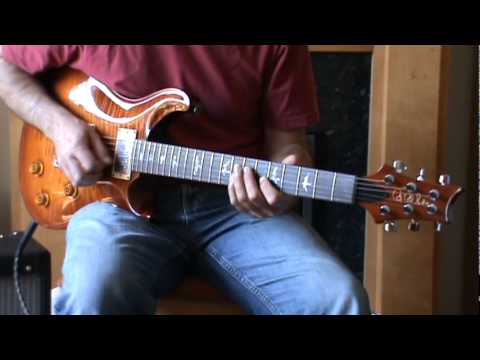We have seen in the previous lesson al the major triads in close (or closed) position. As already stated if these notes of the triad (or ‘voices’) are contained within an octave we call it in ‘close’ or ‘closed’ position, as opposite as ‘spread’ position (more than an octave). Just watch the video where I… Continue reading Triads Pt 2 Spread Voicings
Tag: triads
Triads
In this lesson I go through all inversions for the most popular major triad ‘shapes’ on guitar. The theory behind triads is quite simple: a major triad is basically the 1st, 3rd and 5th note of a major scale. If analysed in intervals: from the root I will have a first note that is a… Continue reading Triads
How to use the Diminished Scale Pt 1
In this guitar lesson I am going over a scale that is widely used in the jazz and fusion circles and creates quite a distinctive sound. Actually…it is not a single scale, but two. The two scales are very similar and in my opinion this is something that can create some confusion. These two diminished… Continue reading How to use the Diminished Scale Pt 1
Triad Pairs – Examples
Just a few examples from the triad pairs video: http://www.TrueGuitarist.com/triad-combinations-also-known-as-triad-pairs/
Triad Combinations (also known as Triad Pairs)
You can get quite a modern sound by alternating and combining major and minor triads. In the video I use variuos combinations like C minor and D major that touch different degrees of the key of the moment. Try different combinations and write down those that sound more interesting to your ears. You can find… Continue reading Triad Combinations (also known as Triad Pairs)
Understanding how triads and other chords are built
How to analyze triads and more advanced chords? The starting point is the major triad, in the example in C major, but this concept is valid for all keys, as usual. The C major chord is built with these three notes: C E G As we said this triad is built with the Root (C)… Continue reading Understanding how triads and other chords are built



